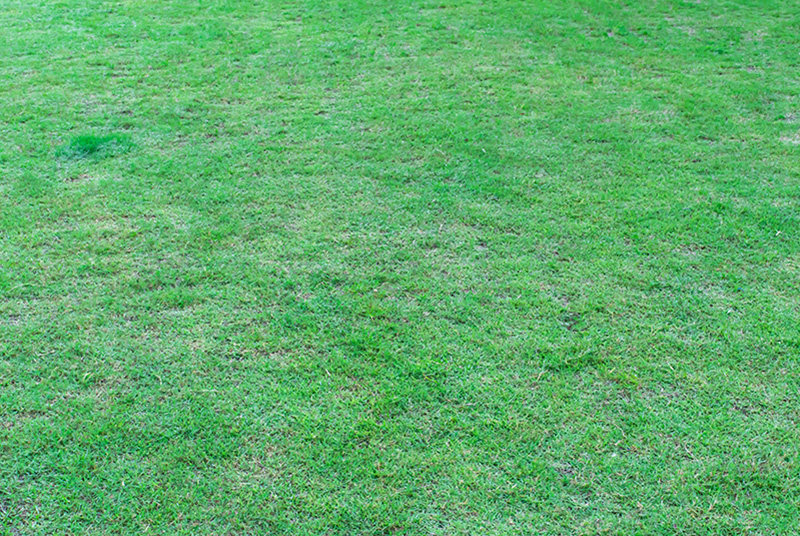
Creeping bentgrass (Agrostis stolonifera) is a cool-season turfgrass and therefore best adapted to cool and humid environments. Creeping bentgrass is also a C3 plant, thus indicating its “photosynthesis engine” captures sunlight and produces carbohydrate compounds by assembling three carbons at a time. Those complex carbohydrate compounds are used for plant growth and development.
This system functions well in spring and autumn, but what happens in the summer during heat stress conditions? Colorants and pigment-containing products are often applied as a means of protecting turfgrass leaf blades from environmental stresses. Can pigments be applied to the turf to keep the photosynthesis engine running at optimum capacity during the summer? Bert McCarty, Ph.D., led a research team at Clemson University (Clemson, S.C.) to answer that question.
Four pigment-containing products were evaluated for their ability to impact plant physiological processes: a combination of zinc oxide + green pigment + titanium dioxide; two copper-based pigments; and one copper-pigmented paint typically applied to provide green color on dormant turfgrass in the winter months. Untreated turf was included for comparison.
Two concurrent studies were conducted on a 12-year-old L-93 creeping bentgrass putting green built to USGA recommendations with a sand root zone, mowed at 0.125-inch (3.2-millimeter) height of cut. The study was conducted from June 18 to Sept. 3 and repeated on separate plots from July 1 to Sept. 15. With both studies, the pigment products were applied every seven days for 10 weeks. The researchers measured soil moisture content, normalized difference vegetation index (NDVI is a reflectance measurement to determine plant health), turf quality, turf canopy temperature, turf canopy carbon dioxide exchange rate, turf canopy photosynthesis efficiency, percent green cover of test plots by digital analysis, root dry weights, zinc and copper leaf tissue concentrations, and zinc concentration in the soil.
The average soil moisture was 27% to 30% volumetric water content throughout the two studies, and average maximum air temperatures ranged from 86 to 93 F (30 to 33.6 C), indicating the creeping bentgrass was subjected to good soil moisture but persistent heat stress.
All four products — zinc oxide + green pigment + titanium dioxide, the two copper-based pigments and the copper-pigmented paint — were associated with a lower carbon dioxide exchange rate, a reduced NDVI and an increased canopy temperature compared to non-treated turf. Only the copper-pigmented paint was associated with a lower turf quality and lower percent turf cover compared to non-treated turf. Roots were not affected by any of the products. Turf canopy fluorescence measurements, which is an indication of photosynthesis efficiency, were not affected by any of the products. Zinc concentrations in soil and leaf tissues increased after applications from the zinc oxide + green pigment + titanium dioxide product. Copper in leaf tissues increased after applications of the copper-pigmented paint.
The results of this study do not imply, “Don’t use pigments on creeping bentgrass putting greens.” The research states: “… the pigment products tested under hot and humid conditions did not significantly enhance photosynthesis.” Pigment products do not claim to be “sunshine-in-a-bottle,” as no product can deliver that benefit. Pigment products can block harmful ultraviolet B (UVB) radiation (incidentally, UVB is the primary cause of sunburn, with wavelengths between 280 and 315 nanometers). Turf managers interested in pigments should be prudent and determine how these products can be utilized to add value into their overall agronomic management program.
Although McCarty recently retired from Clemson University, he was asked to return part time to help out with various outreach activities. During his career, he has co-authored several books, including “Color Atlas of Turfgrass Weeds,” “Fundamentals of Turfgrass and Agricultural Chemistry” and “Best Golf Course Management Practices.” Thank you, Dr. McCarty, for your valuable contributions to turfgrass science.
Source: McCarty, L.B., J.R. Gann, C.E. Wells and P.D. Gerad. 2014. Creeping bentgrass field response to pigment-containing products. Agronomy Journal 106(4):1533-1539 (https://doi.org/10.2134/agronj14.0008)
Mike Fidanza, Ph.D., is a professor of plant and soil science in the Division of Science, Berks Campus, at Pennsylvania State University in Reading, Pa. He is a 23-year member of GCSAA.